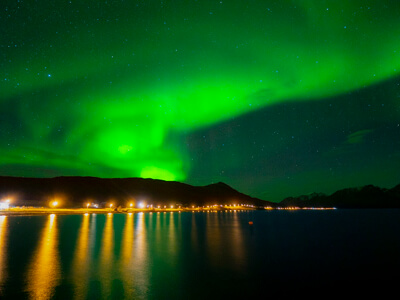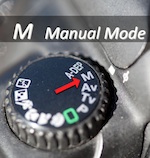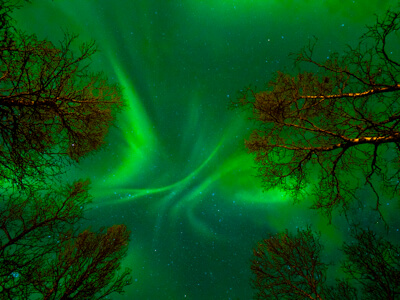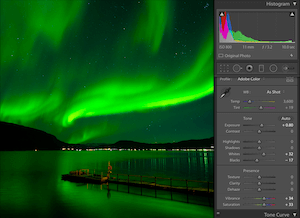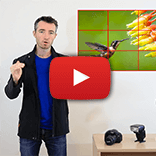3) Setting up your camera
1) Wide Lens: Put a wide-angle lens on your camera, ideally one that can go as wide as perhaps 16mm (for a full frame camera), or 10mm or 8mm for crop-sensors. Or, just the widest you have. Just like photographing star trails, the light is faint and it helps if your lens can open up to a nice big aperture (ie a small f/#) to let lots of light in. f/2.8 is awesome, f/4 is still fine.
2) Tripod: Find a nice composition and then attach your camera to a tripod to hold it in that location. Make sure the camera is horizontal, it's easy to shoot wonky photos at night.
3) MF Focus: It'll likely be too dark to have your camera try and auto-focus on your scene for each shot, so you're going to have to put your lens into Manual Focus. Rather than then try and guess the right focus, a good trick can be to point your camera at something in the distance that's bright enough for the Auto Focus to see, such as a bright star, distant building light, moon etc and then with your lens still set to Auto Focus (AF), half-press the shutter button on your camera to get it to try and Auto Focus onto it. If your camera eventually manages to AF on it (ie 'beeps' and goes green or whatever, and it doesn't matter if it takes a few attempts) then, now that the focus is perfect, switch the focus now to Manual Focus (MF) (the switch is often on the side of the lens), and now as long as you don't bump the focus ring on your lens, it will stay nicely pre-focused from now on and you won't need to worry about trying to manual focus or re-focus each time! If there's nothing bright enough to focus on, then instead many lenses have a focus-distance display on the barrel of the lens itself. In this case, put the lens into MF and then twist the focus ring until it's set to infinity.
If you have a subject close to the camera in your scene, ie a person standing there, then it's probably best to focus on them rather than the Aurora, because you'll be able to see if your subject looks blurry more than if the aurora is a bit soft in the background. You'll be likely using a small f/# to let the light in, which can tend to give you a small depth of field exacerbating this problem, but wide angle lenses tend to give you quite a deep depth of field anyway, so you'll be fine.
4) Manual Mode: Set your camera to Manual Mode - it's actually easier this way.
5) Set a small f/#: Dial your f/# down as small as it will go (ie f/4 or even f/2.8 if it'll go that small). This opens up a large aperture hole allowing as much light as possible.
6) Set your ISO to 1600: The Aurora is often pretty faint and you're going to have to crank up your ISO as high as you're willing to to get a bright enough result. It's a balance: if you turn your ISO up too high then your shot starts to loose quality and becomes grainy / gritty from 'ISO Noise', but if you have your ISO set too low, then the aurora will be too faint. The exact ISO value to use depends on how bright the aurora is, how good your camera is with high ISO's and how much ISO noise you're willing to accept in your photo. A good starting point is ISO 1600, and you'll adjust from there.
7) Shutter Speed 10-20 seconds: The Aurora actually moves surprisingly fast and so if your shutter speed is too slow, the aurora will actually look like a soft, blurry smear, loosing all the interesting patterns and waves in the curtain effect. The faster the shutter speed, the crisper your Aurora will look, but the darker it will be (or, the higher you'd have to turn your ISO up to brighten it back up). 30 seconds is getting a bit slow, so I like to start at 20 seconds, and adjust faster from there if possible, to maybe 10 seconds is great if it's a bright aurora.
8) Turn OFF stabilising & use 2-sec delay: Not only is it just wasting battery as your camera is already nice and steady on a tripod, but many lens stabilisation systems actually create camera shake / wobble / blur if the camera is held steady and stabilisation is left on. So turn it off - the switch is often on the side of your lens and called 'OS', 'IS' or similar. Then, so that you're not wobbling your camera each time you press the button to take a photo, either plug in a remote control, or more easily, change the 'Drive Mode' setting to the 10-second self-timer countdown delay (or better yet, the 2 second delay if it has that). This lets the camera settle down and become perfectly steady before it takes the photo.
9) Raw mode: Ideally shoot in RAW mode (not jpg) to allow you more ability to post-process the image later, including being able to tweak the white-balance later to give you correct colours. If you really want to shoot in jpg because you're not going to do any post-production, then setting your white balance can become important - if 'Auto White balance' is giving you weird colours, set your white balance manually to somewhere between 3500 and 4000 K in your camera's menu.
10) Take a test photo! Then see below for how to start improving...



